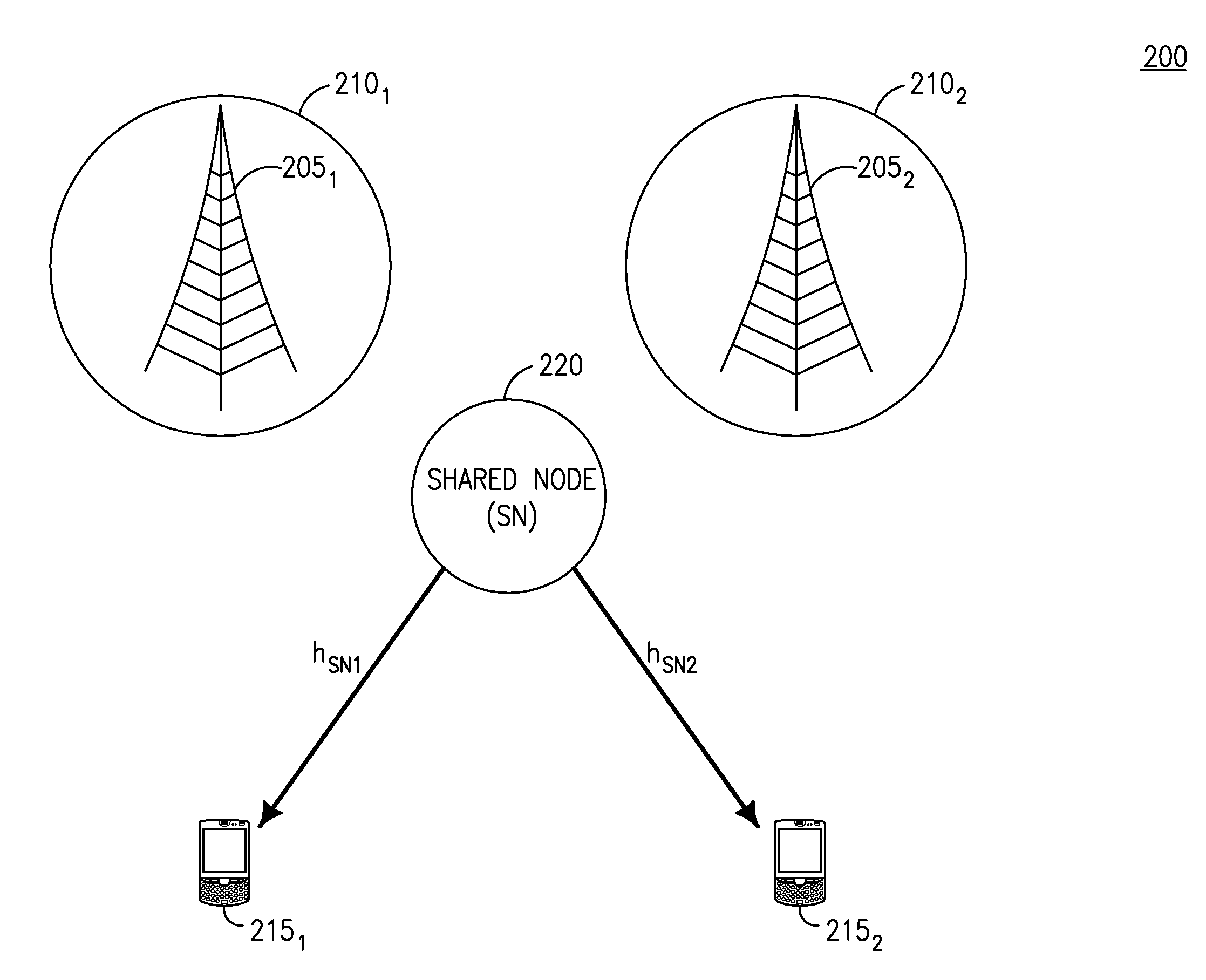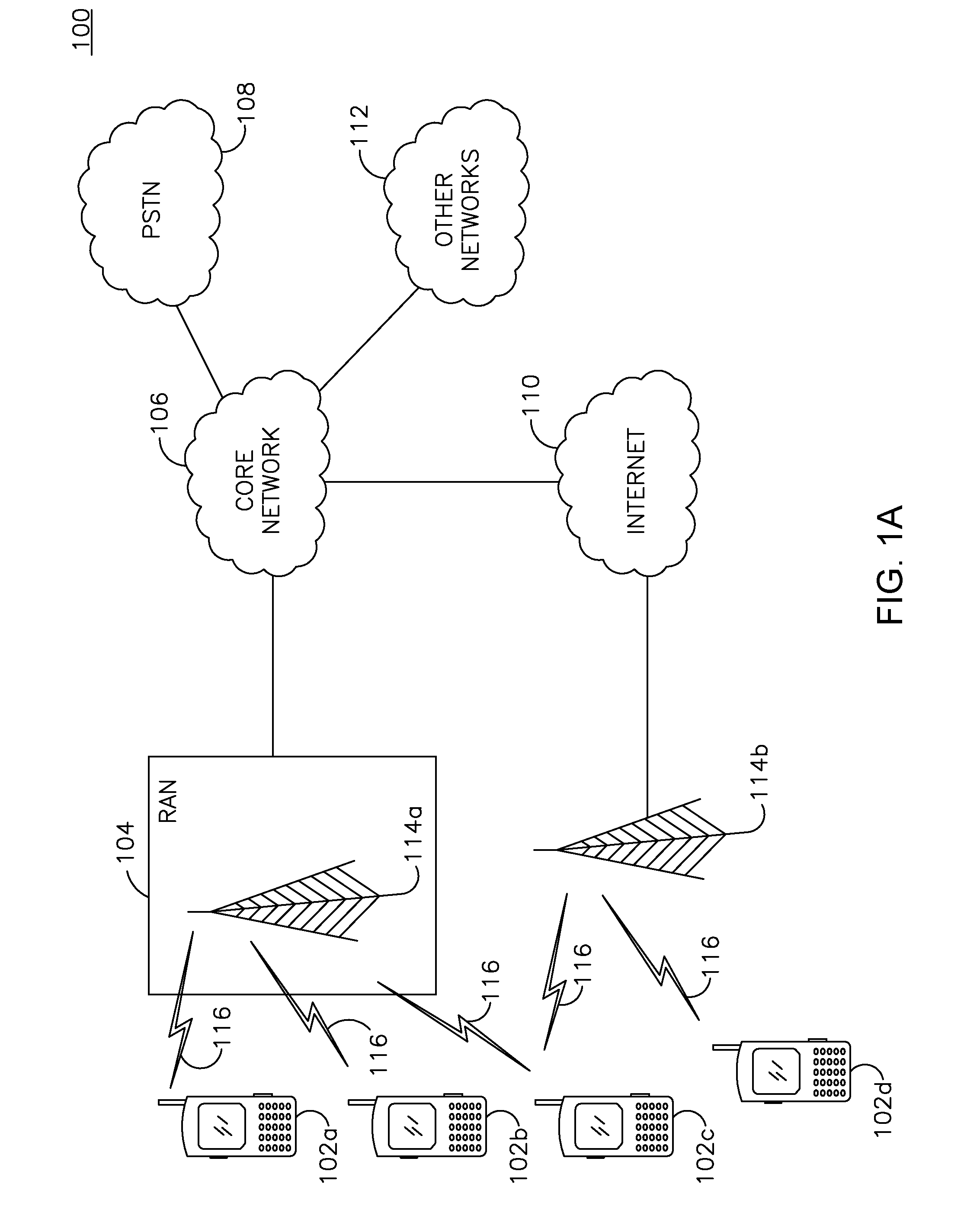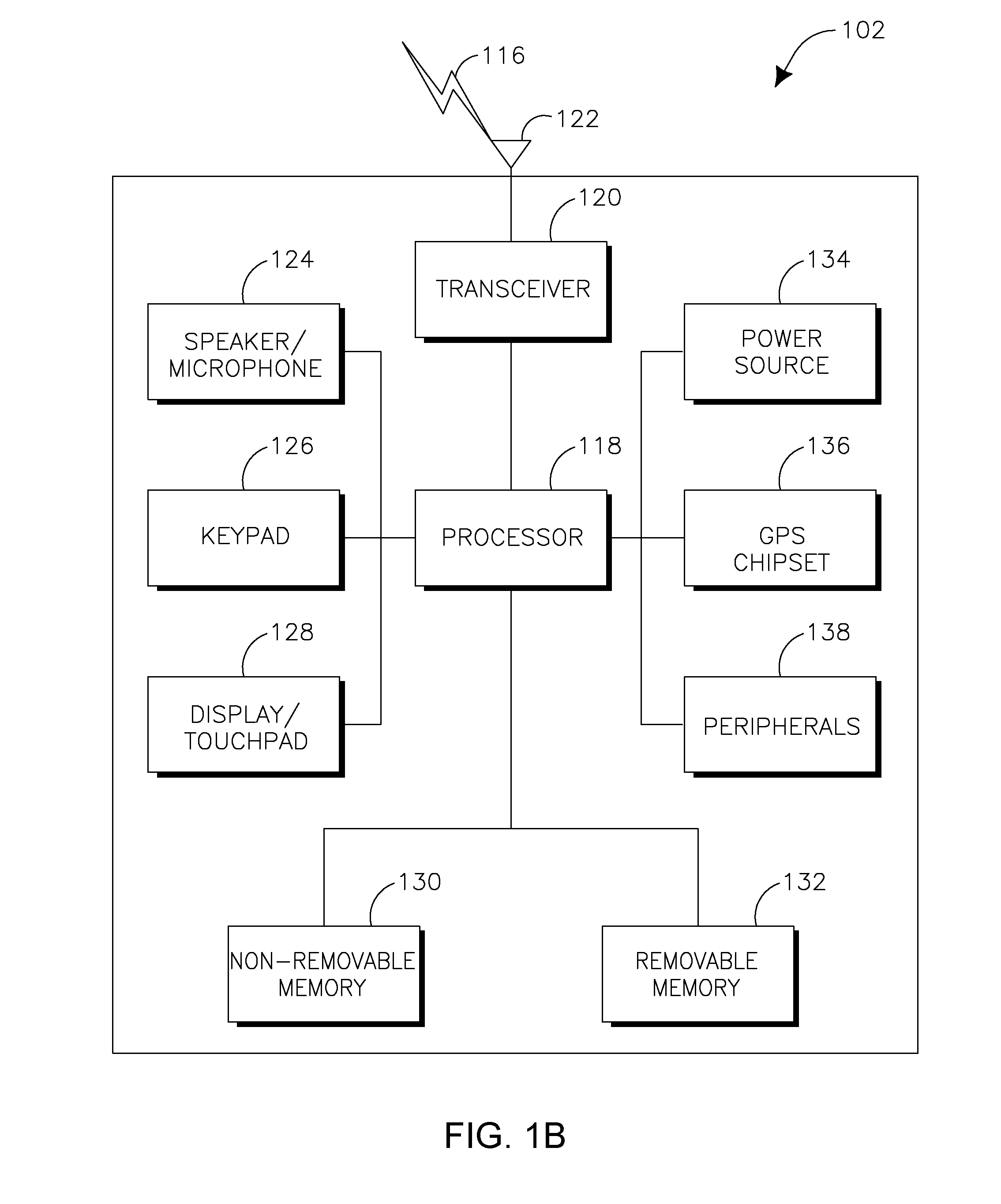Method and apparatus for minimizing interference at a mobile station using a shared node
- Summary
- Abstract
- Description
- Claims
- Application Information
AI Technical Summary
Benefits of technology
Problems solved by technology
Method used
Image
Examples
Embodiment Construction
[0020]When referred to hereafter, the terminology “wireless transmit / receive unit (WTRU)” includes but is not limited to a user equipment (UE), a mobile station, a fixed or mobile subscriber unit, a pager, a cellular telephone, a personal digital assistant (PDA), a computer, or any other type of user device capable of operating in a wireless environment.
[0021]When referred to hereafter, the terminology “base station (BS)” includes but is not limited to a Node-B, a site controller, an access point (AP), or any other type of interfacing device capable of operating in a wireless environment.
[0022]When referred to hereafter, the terminology “shared node (SN)” refers to a node, (i.e., relay node, helper node, helper WTRU) that forwards at least one signal. In the case of an uplink transmission, the node forwards at least one signal received from at least one WTRU to at least one base station, (e.g., Node-B, access point (AP), evolved Node-B (eNB), and the like). In the case of a downlink...
PUM
 Login to View More
Login to View More Abstract
Description
Claims
Application Information
 Login to View More
Login to View More - R&D
- Intellectual Property
- Life Sciences
- Materials
- Tech Scout
- Unparalleled Data Quality
- Higher Quality Content
- 60% Fewer Hallucinations
Browse by: Latest US Patents, China's latest patents, Technical Efficacy Thesaurus, Application Domain, Technology Topic, Popular Technical Reports.
© 2025 PatSnap. All rights reserved.Legal|Privacy policy|Modern Slavery Act Transparency Statement|Sitemap|About US| Contact US: help@patsnap.com



